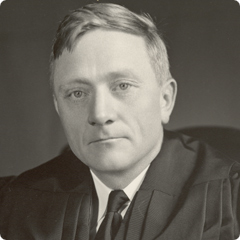The Environmental Justice: William O. Douglas
A recent communication out of the University of Idaho sustainability research department offers something completely different and long overdue: The first study of William O. Douglas’ conservation legacy. Douglas was raised in Yakima and attended Whitman College in Walla Walla before becoming the longest-serving justice in the history of the Supreme Court for 36 years. Always fond of the outdoors, he served on the Board of Directors for the Sierra Club and his positive review and defense of Rachel Carson’s “Silent Spring” assisted a crucial turning point for environmentalism. 
From the U of I:
Environmental Historian offers First-Ever Study of Supreme Court Justice William O. Douglas’ Conservation Legacy
By Donna Emert
MOSCOW, Idaho – Long before there was an Earth Day, or the widespread environmental consciousness that gave rise to it, U.S. Supreme Court Justice William O. Douglas devoted his time, energy, intellect and considerable political clout to an emerging conservation movement.
Douglas was the longest-sitting justice in the history of the Supreme Court, serving from 1939-75. On the bench and outside the courtroom, he shaped land-use legislation and the American consciousness.
On Earth Day, Wednesday, April 22, from 6-8 p.m. at BookPeople in Moscow, University of Idaho Professor of Environmental History and Director of the Institute for Pacific Northwest Studies Adam Sowards will introduce Douglas’ legacy to the public, chronicled for the first time in his recently released book, "The Environmental Justice." Sowards will be on hand to discuss his work and sign copies.
“Douglas served a role for the American conservation movement that no one else could – that of public intellectual,” Sowards said. “He used his prominence to reach a broad American public and educate them about the threat to America’s natural heritage by commercial development, industrial pollution, and an unresponsive political system.”
Douglas lent his high profile to the cause, often hiking wilderness trails and expounding their virtues to the press. His outings included a visit to the Salmon River, which he later wrote about, and he is reported to have hiked the entire length of the Appalachian Trail – about 2,000 miles. Through diverse methods of advocacy, Douglas was instrumental in bringing protection to the Chesapeake and Ohio Canal National Historical Park, the Pacific Beach portion of the Olympic National Park, the Eagle Cap Wilderness Area in Oregon, and the William O. Douglas Wilderness Area in the Central Cascade Mountains.
Douglas was particularly valuable to the environmental movement early on, Sowards notes. “In the 1950s, conservationists had few opportunities to challenge prevailing modes of resource use, because laws had not been crafted to allow public input into management decisions,” said Sowards. “Consequently, they needed to draw attention to their causes, which Douglas could do very well given his national reputation and status as a Supreme Court Justice.”
“More than anything else, Douglas saw that the public needed to understand the problems facing nature, to understand the political and administrative system, and to understand the value of their involvement in crafting solutions,” said Sowards. “Conservationists had been cast aside as mere ‘bird watchers,’ but Douglas helped demonstrate that powerful people believed in the conservation cause, lending it critical legitimacy.”
Sowards’ previous research on Douglas has been published in the Western Historical Quarterly and in Journal of the West. He also authored a chapter on Douglas in "The Human Tradition in the American West." Sowards’ first book, "United States West Coast: An Environmental History" (2007), was named a 2008 Choice Outstanding Academic Title.
Sowards recently earned tenure and promotion to associate professor of history in the College of Letters Arts and Social Sciences (CLASS). He also serves as adjunct faculty in environmental science, water resources, American studies and philosophy.
